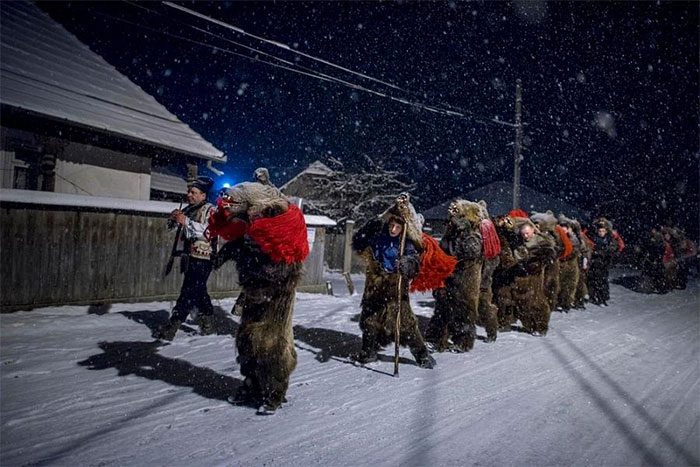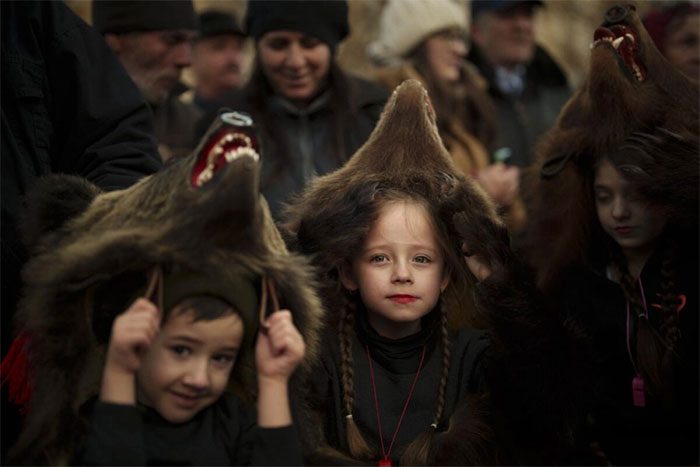Centuries ago, the people in eastern Romania wore bear skins and danced to drive away evil spirits. This tradition is now known as the Bear Dance Festival, attracting numerous tourists every December.
Hundreds of people of all ages, dressed in bear costumes, dance annually during Christmas, accompanied by lively drumming as they wander through villages and towns in Romania. This year, the highlight of the festival falls on December 30, when dancers in bear costumes descend upon the town of Comanesti in eastern Romania to participate in the festivities. On this day, visitors can marvel at the sight of groups dressed in costumes featuring open-mouthed bear heads and claws parading and dancing.

Members of the bear troupe move through the houses in the village. (Photo: APnews.com).
Local residents say this tradition dates back to pre-Christian times when it was believed that wild animals could ward off bad luck or danger. The dancing bears would visit homes, knocking on doors to wish residents good luck and a happy new year.

Members of the Sipoteni bear troupe perform at the festival in Racova. (Photo: AP).
Participants in the festival state that most of the bear skins they use for costumes have been preserved through generations and are handled with great care. Wearing a large bear skin costume is no easy feat, as it includes the head and claws, and the outfit can weigh up to 50 kg. According to local media, the most expensive bear skin can cost around 2,000 euros.

The traditional bear skin dance festival in Moinesti, northern Romania, attracts both adults and children. (Photo: APnews.com).
For the local inhabitants, the image of the bear has long flowed through their veins and is regarded as their totem. Brown bears are prevalent in Romanian tradition and culture, and people often see these animals on mountain roads and in the forests. Overhunting has led authorities to impose a hunting ban since 2016.




















































